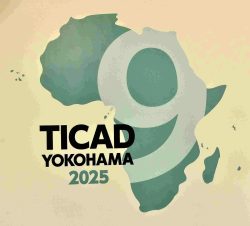December 10, 2021
In the Tokyo Olympic Games held this summer, China won 38 gold medals, just one behind the top-ranked United States. In the Tokyo Paralympic Games, China achieved an overwhelming tally of 96 gold medals. China thus showed its presence as a sports power.
About 70 years ago, the newly founded People’s Republic of China made its Olympic debut in the 1952 Helsinki Summer Games. At the time, it gained no medals at all. After that, China did not participate in the Summer Olympic Games from Melbourne in 1956 to Moscow in 1980.
However, since China returned to the Summer Olympics during the 1984 Games in Los Angeles, it has paved the way to emerge as a sports power. China’s advances in athletic competition moved largely in tandem with the country’s push for high economic growth that it pursued under the reform and opening-up policy initiated by Deng Xiaoping in 1978.
China’s nominal gross domestic product in 1980 stood at $303 billion, equivalent to about one-ninth that of the United States and a quarter of Japan’s. Thirty years later, China surpassed Japan in terms of GDP, emerging as the world’s second-largest economy, just behind the United States.
China now looks set to overtake the United States within 10 years as the world’s largest economy in terms of GDP. China’s rapid rise is not limited to the scale of GDP. It is threatening U.S. superiority in the fields of telecommunications, electric vehicles and other advanced technologies. This year, China finally outstripped the United States by topping the table of countries and territories ranked inside the top 10% for natural science theses cited in other papers.
A few years ago, the United States under the administration of President Donald Trump imposed high tariffs on imports from China. As a result, the trade friction between Washington and Beijing intensified. Now, having gone beyond the issue of trade imbalances, the two powers are in a rivalry for hegemony. The United States is carrying out operations to seek to “contain” China as it did to the former Soviet Union during the Cold War.
For its part, China under the leadership of President Xi Jinping has rapidly accelerated state control. It is still fresh in our mind that at the end of June 2020, Beijing enforced legislation for “safeguarding national security in Hong Kong.”
When I visited Hong Kong at the invitation of the Hong Kong government about 10 years ago, I asked a high-ranking official where the territory’s “value added” would come from now that its role as a key commercial port had been on the decline. The official, answering in an unequivocal and scrupulous tone and citing specific examples, referred to the tradition of “the rule of law” established during the British colonial era.
China would have continued benefiting from the “one state, two systems” formula. Nonetheless, the Xi leadership broke the formula with its own hands.
Qualitative change
State control is having a serious effect on the Chinese economy. After having grown at an annual rate of about 10% since the launch of the reform and opening-up policy, the Chinese economy’s growth rate fell to about 7% in 2012. In 2015, the National People’s Congress — China’s top legislature — embraced the country’s growth at 7% as the “new normal.” No economy can indefinitely sustain growth at 10%. A slowdown in growth is proof that China’s economy has matured. On the other hand, the tightening of state control is indicative of a qualitative change in the Chinese economy.
The level of inequality is great in China, a socialist country that is supposed to seek equality in society. The Gini coefficient is used to measure income inequality. It ranges from 0 (perfect income equality) to 1 (perfect income inequality) with a number closer to 1 indicating greater inequality. The Gini number for China is more than 0.4, exceeding that for the United States, which is known for large disparities.
In China, exams for entry to schools are fiercely competitive, with many elementary and secondary school students attending cram schools. In July this year, the Chinese Communist Party and the State Council of China suddenly banned the opening of new cram schools for elementary and secondary school students. The authorities let the existing ones remain as not-for-profit tutorial schools and are not allowing any foreign capital. What they did is too extreme a policy change even despite it being aimed at rectifying the inequality in education opportunities. In other words, the crackdown on private tutoring can be said to epitomize how China’s reform and opening-up policy is near a major turning point.
China is solidifying state control on its soil and continuing coercive maritime advances in the East and South China seas. China can never convince many foreign countries through such behavior. For example, China once appeared to have gotten itself closer to Europe through its Belt and Road Initiative, but its relationship with Europe now is not going well.
As tensions are rising between the United States and China and uncertainty is increasing with regard to international relationships, the most important thing for Japan to do is to ensure the upkeep of economic strength that can stand in comparison with that of other developed countries.
“Made in America,” a report published in 1989 in the United States, which had been suffering from the weakness of its industry for years, began with this sentence: “To live well, a nation must produce well.” This impressive sentence can be applied to any country at any time.
But it does not mean that countries are encouraged to compete in terms of GDP. The gap between Japan and China will inevitably widen further in terms of GDP because of the sheer size of China’s population. By the same token, India is expected to develop as a new superpower within the current century.
What is important is to increase per capita income even amid demographic contraction. Growth in per capita income can be realized through broadly defined technological innovation involving both hardware and software.
Knowledge-intensive race
In the distant past, when agriculture was the basis of economies, land served as the main driver of production. When industrialization began in the 19th century, capital emerged as the important driver of production. In the late 20th century, knowledge began playing an increasingly greater role during the era of information technology. To put it differently, the era of physical and tangible assets was superseded by the era of the knowledge-intensive economy where intangible assets such as patents, design and brands are decisive factors.
When it comes to producing goods that can be made by anybody in any place in the world, developed countries cannot compete with low-wage developing countries. Developed countries, including Japan, have no choice but to utilize knowledge to stay internationally competitive.
China started its modernization as a developing country and now is a member of the club of knowledge-intensive economies. China’s transition to such a status has become possible thanks to technologies transferred by foreign firms and contributions by Chinese nationals who studied abroad. China has also taken the so-called comparative advantage of less developed countries, as seen, for example, in the fast diffusion of mobile phones across a country where fixed-line phone networks had not been widespread.
Japan has to compete with not only Western nations, but also China on the frontier of knowledge. Japan of course needs to create new knowledge on the one hand, and it has to firmly protect intellectual properties — the fruits of its knowledge creation efforts — on the other hand.
In the 21st century, mankind faces two preeminent themes that originally surfaced in the 20th century: green efforts to save the environment and efforts to deal with the graying of the population. Those efforts have been gathering speed in recent years.
The international community now has a global consensus especially on the issue of global warming, at which Europeans were the first to become alarmed. The recently held 26th session of the Conference of the Parties to the U.N. Framework Convention on Climate Change (COP26) marked a milestone in the world’s fight against global warming. The development and diffusion of electric vehicles and other green technologies are underway in earnest to achieve carbon neutrality, or reduce greenhouse gas emissions to net zero, by 2050.
To take part in the immense world-level competition for net-zero emissions, Japan needs to mobilize en masse universities’ basic research expertise and private-sector corporations’ research and development resources. To that end, the government should strategically coordinate their involvement.
Let’s look back at what happened in Japan in this respect in the past year. It is clear that the government’s coordination efforts have not been smooth enough in promoting the development of COVID-19 vaccines and quickly beginning vaccination as well as making hospitals better prepared for novel coronavirus infections. Ensuring strategic coordination among universities and companies amid difficulties is an urgent issue that the government must resolve.
"Editorial & Columns" POPULAR ARTICLE
-

Violations of Subcontract Law: Major Automakers Must Eliminate Old Practices
-

Local Governments’ Tax Revenues: Devise Ways to Correct Imbalances in Tax Sources
-

5 Japanese Business Dinner Mistakes to Avoid — and What They Taught Me About Business in Japan
-

Heavy Rains in Asia: Support for Victims, Flood-Control Measures Urgently Needed
-

Rice Coupons: A Misguided Approach to Countering Rising Prices
JN ACCESS RANKING
-

Keidanren Chairman Yoshinobu Tsutsui Visits Kashiwazaki-Kariwa Nuclear Power Plant; Inspects New Emergency Safety System
-

Imports of Rare Earths from China Facing Delays, May Be Caused by Deterioration of Japan-China Relations
-

University of Tokyo Professor Discusses Japanese Economic Security in Interview Ahead of Forum
-

Japan Pulls out of Vietnam Nuclear Project, Complicating Hanoi’s Power Plans
-

Govt Aims to Expand NISA Program Lineup, Abolish Age Restriction






















